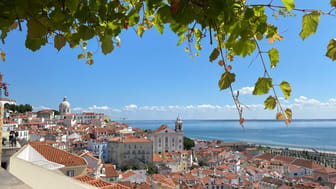Igreja de São Vicente de Fora





Ask ThatchGPT
Suggest a local expert to plan my trip
Suggest an unique itinerary for my Portugal trip
What foods do Portugal locals eat
What are some true hidden gems in Portugal
Help me brainstorm trip ideas for Portugal
Help me plan a family-friendly trip to Portugal
What people say
Pedro Pereira
Available for hire
"It was in this place that D. Afonso Henriques ordered the founding of a Monastery in 1147, handing it over to the canons regular of Saint Augustine. He dedicated it to Saint Vincent, to whom he made a vow if he won the conquest of Lisbon from the Moors.
However, the monument we see today began to be built in 1582, being emblematic of the period in which Portugal was ruled by King Philip II of Spain and I of Portugal.
Located on one of the eastern hills of Lisbon, from where you can clearly see the Tagus River, it is one of the most important works of Portuguese architecture from the end of the 20th century. XVI. It was built between 1582 and 1629, according to a design by the Spanish architect Juan de Herrera, although the works were directed by Filipe Terzi, Baltazar Álvares and Pedro Nunes Tinoco. The facade, designed by Baltazar Álvares, was one of the first to follow the Chão Style, a Portuguese adaptation of the monumental Roman Mannerism. The model would later be applied to many other Portuguese monuments, throughout the country and in the colonies, during the 20th century. XVII.
Inside the Monastery, the baroque decoration deserves attention. The tile covering is noteworthy, particularly in the cloister where La Fontaine's Fables are represented, as well as the gilded carving, with special attention to the canopy over the main altar, designed by the renowned sculptor of the 19th century. XVIII Machado de Castro.
The Monastery's old refectory was transformed into the Royal Pantheon in 1885. There are the tombs of the kings of Portugal, from D. João IV (r. 1604-1656) to D. Manuel II (r. 1908-1910), with the exception of D. Maria I (r. 1777-1816) and D. Pedro IV (r. 1826)."
Sarah Lowell
Available for hire
"This gorgeous monastery holds amazing tile work, unique museum exhibits, and the tombs of 98% of the Bragança Dynasty. One of three dynasties that rules during the time of Portuguese monarchies, the Braganças gained power in 1640 following the end of the Iberian Unification, and lost power in 1910 when the people overthrew the monarchy. "
Read more in:
JourneyMaker
Available for hire
"Entrance 5 euro, lots of Azulejos tiles and great view at the top"
Read more in:
Mentioned in these guides
About Igreja de São Vicente de Fora
Get the inside scoop on Igreja de São Vicente de Fora from local experts, travel creators, and tastemakers. Browse genuine trip notes, Igreja de São Vicente de Fora reviews, photos, travel guides, and itineraries from real travelers and plan your trip with confidence.
Phone
Save this spot for later or start mapping out a new trip today
Try our AI Travel Assistant and get instant answers to any questions about your trip.
Ask ThatchGPT


